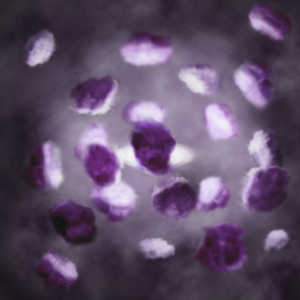
The growth of the supermassive black hole at the centre of a galaxy through accretion manifests itself spectacularly in the form of an active galactic nucleus (AGN). Radiating over the entire electromagnetic spectrum, AGN are the most energetic long-lived objects in the Universe and are thought to play a fundamental role in galaxy evolution. Despite their importance for shaping the Universe we observe today, surprisingly little is known about the physical processes at play in these objects on parsec scales. The field has recently gained a strong momentum and in need of some introspection, triggered by new facilities and observational results.
For the past 30 years, a toroidal structure in the equatorial plane, the so-called dusty and molecular torus, has been considered a cornerstone of unified schemes of Seyfert galaxies (i.e. nearby AGN). However, this picture has recently been challenged through high spatial resolution infrared observations by the discovery of polar elongated dust structures, rather than doughnut shaped distributions. Similarly, recent X-ray observations have provided critical new insights into the toroidal obscurer and scatterer, potentially requiring a reinterpretation of long-established conceptions via spatially unresolved spectroscopy. The first ALMA observations, for their part, have led to contradicting interpretations: either the submm emission is indeed dominated by a rotating torus structure, or it is dominated by an outflow, which would be more compatible with the elongated dust shapes seen in the infrared. Together with a dramatic increase in computational power, these observations have triggered a renaissance in modelling of the nuclear material, with models for the first time trying to not only explain the SEDs but also the spatial distribution of the dusty and molecular material. Further observational results are expected to revolutionise this picture in the next years through the increased spatial resolution and sensitivity of ALMA and JWST, as well as the new generation of high-resolution X-ray spectrometers such as XARM.
Continuing the long tradition of international TORUS workshops, we announce TORUS2018 in Puerto Varas, Chile, to investigate the many faces of AGN obscuration. Considering the new theoretical and observational work carried out across the electromagnetic spectrum, the scientific goal of the workshop is to critically assess and challenge our current "common knowledge" and "widely accepted" torus picture. What do we really know for sure? What do we only think we know? And what is it that we do not know?





